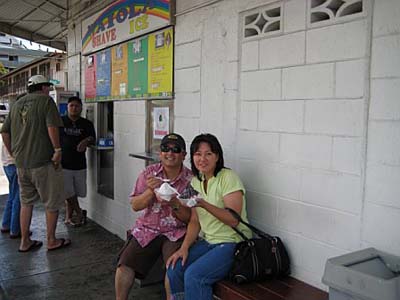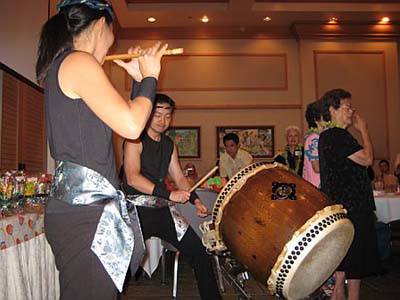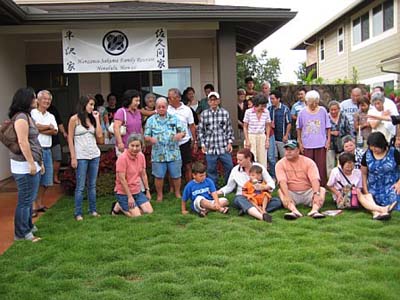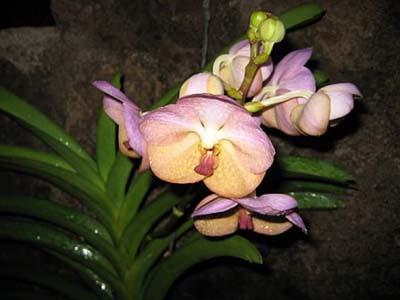 We had heavenly shave ice at the Waiola corner grocery, which was just a block from where my grandfather had his home and business. The spot now has a high-rise apartment or condo on it, and the location of the Honolulu Stadium next door is now a park. We had heavenly shave ice at the Waiola corner grocery, which was just a block from where my grandfather had his home and business. The spot now has a high-rise apartment or condo on it, and the location of the Honolulu Stadium next door is now a park. |
Monday, Sept. 17
This day was one of discovery about my family. It began with my cousin Aileen Moriwake guiding us to the apartment of my Aunt Mary Asakawa and my cousin Keith, who’s probably around my age.
We met Aileen at the Ala Moana Center, a shopping mall in downtown near the Waikiki district, and she led us across a street and down a block to a building tucked away behind a high rise and next to some dilapidated old shacks. Honolulu is full of these juxtapositions of new and fancy with old and rundown. Ramshackle single family homes and low-lying old apartment buildings can often be found shoe-horned into tight spaces between modern developments. I figure this is a side-effect of rapid growth and economic boom times.
We had tried calling my Auntie Mary’s phone number but got a “no longer in service” message. Some of the Hanzawa and Sakuma cousins had visited with her to get her to attend the reunion but she declined. Aileen had spoken to her from time to time too. I know the Asakawas are a private family – we didn’t even know that my Uncle Alex had died some years back. The last time I spoke to Uncle Alex, my dad’s brother, was when I tracked him down to tell him my father had died, back in 1992.
Aileen decided we should just go to the apartment and see if we could visit with my Aunt Mary. I pressed the buzzer for the apartment, and a man’s voice answered. It was my cousin Keith.
Unfortunately, my Aunt Mary was out and Keith was about to head to work (for the Transportation Safety Administration), so we had just a brief conversation over the building’s intercom. I got their phone number – we had one digit wrong, which was why we got the disconnected message – and I’ll call sometime after I get back to Colorado.
From the apartment, we returned to the mall and got into Aileen’s car. She took us to an older residential area west of downtown, at the corner of Waiola Street and Makahiki Way and pointed to a high-rise apartment building. It’s where my grandfather and his family used to live, and where his construction business was based. It’s where the old picture I have, with the sign announcing “K. Asakawa Construction,” and all the Asakawa kids lined up in front of the building, was taken. Continue reading













